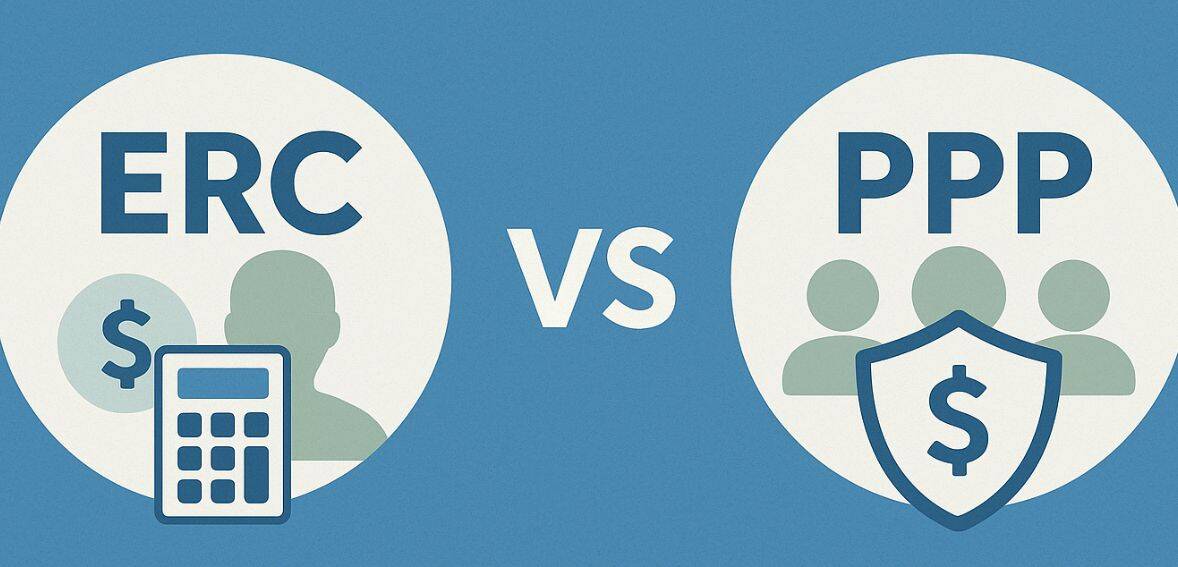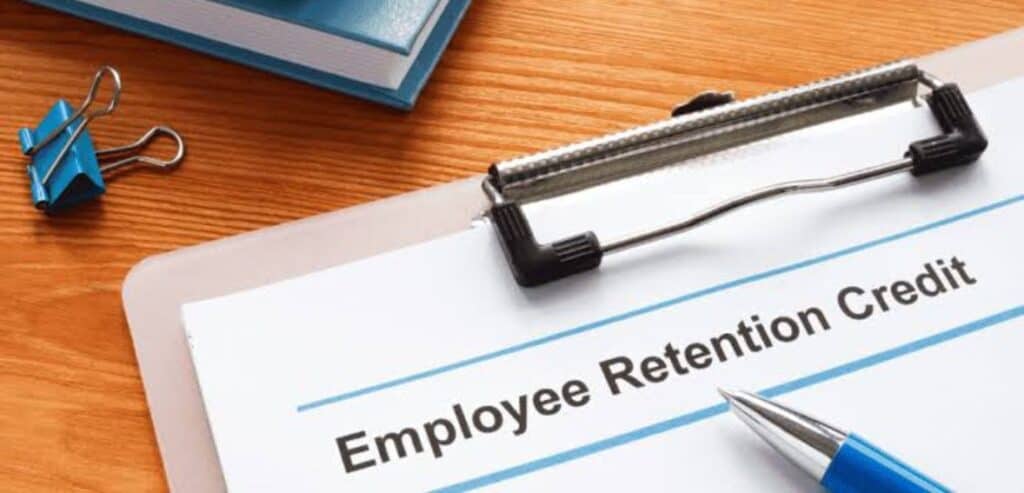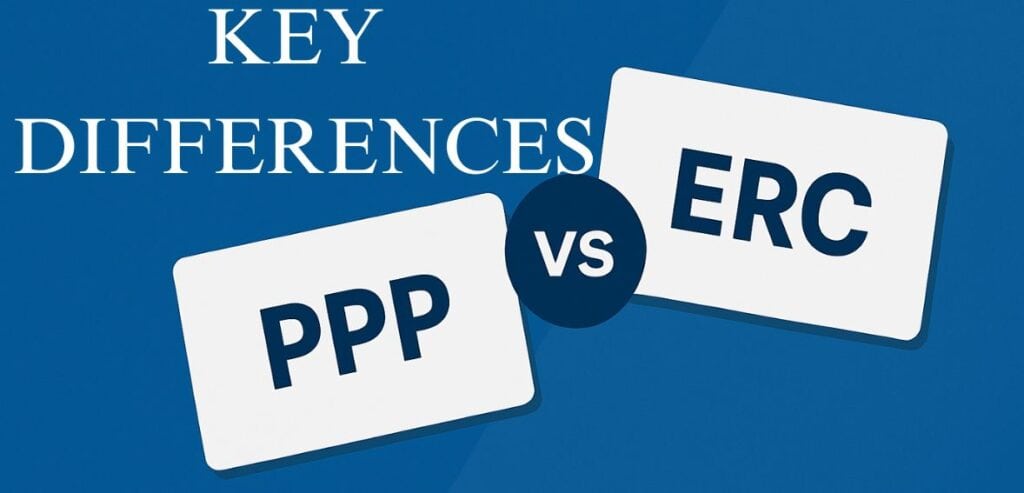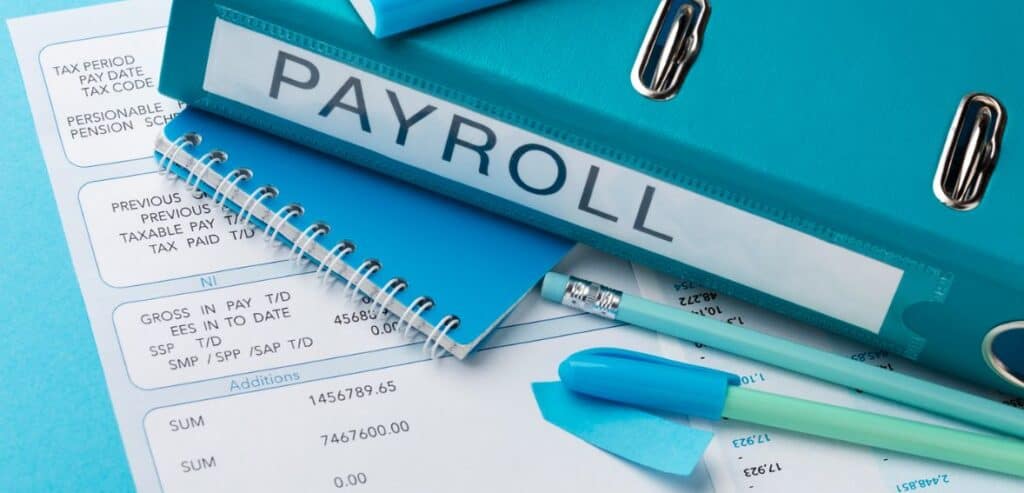
By ercclaims June 28, 2025
The COVID-19 pandemic disrupted nearly every aspect of business operations, especially for small and mid-sized companies struggling to meet payroll during lockdowns and unpredictable market conditions. The Paycheck Protection Program (PPP) and the Employee Retention Credit (ERC) were two of the most significant financial relief initiatives that the U.S. government implemented in response.
Though structured differently with unique regulations, timeframes, and outcomes, both programs were designed to provide swift, meaningful support in helping businesses retain their employees. It is essential for business owners to understand the differences between PPP and ERC.
While both programs provided lifelines in times of need, selecting the best one or figuring out how to combine them successfully calls for a thorough understanding of their distinct roles. The ERC is a refundable tax credit against specific employment taxes, whereas PPP focused on forgivable loans based on payroll and operating expenses.
The amount of relief that a business can receive depends on the specific eligibility requirements, deadlines, and financial mechanisms of each program. The choice between ERC and PPP does not just depend on personal preference; it also involves timing of payroll reporting, compliance, and strategic financial planning. The guidance on whether businesses could benefit from both programs changed along with IRS regulations. ERC may now be available to many companies that previously relied on PPP, and vice versa. For business owners who might not have thoroughly considered their options, the ability to retroactively claim ERC even after receiving PPP funds has added a layer of complexity—and potential value.
Understanding the Basics of PPP
One of the most well-known and popular relief initiatives during the COVID-19 pandemic was the Paycheck Protection Program. PPP was created by the U.S. Small Business Administration (SBA) to assist companies in keeping their employees during downturns and shutdowns. A second-draw loan and longer usage periods were made possible by later legislation after it was first introduced in March 2020 under the CARES Act.
Under PPP, businesses could receive loans that would be forgiven if certain criteria were met, effectively turning the loan into a grant. At least 60% of the loan had to be used for payroll costs in order to be fully forgiven, with the remaining 40% being used for qualified operating expenses like rent, utilities, and mortgage interest. This loan forgiveness feature, which enabled companies to treat the funding as effectively a grant if conditions were met, was crucial to the program’s appeal.
Although some industries and exceptions were made for businesses over this threshold, PPP eligibility was primarily focused on small businesses with 500 or fewer employees. In order to be eligible for forgiveness, borrowers had to show that the pandemic had caused economic uncertainty and utilize the money within a specified timeframe. The application process for the two PPP funding rounds was conducted through participating lenders.
During the most unstable times of the pandemic, PPP was a financial lifeline for a lot of businesses. Its strict forgiveness requirements, documentation requirements, and loan structure, however, presented difficulties, especially for individuals who were not familiar with SBA compliance standards. PPP was not always the best option for businesses that later realized they could have benefited more directly or permanently from tax credits like ERC, even though it helped millions of businesses survive.
Breaking Down the Employee Retention Credit (ERC)

On the other hand, the purpose of the Employee Retention Credit was to incentivize companies to continue paying their workers even in the face of temporary closures or large revenue losses—understanding how ERC works is key to determining its long-term value. Unlike PPP, which offered businesses immediate funding via approved lenders, ERC functions through the IRS and reduces the employer’s payroll tax liabilities.
Companies get a credit that can be used against their employment tax deposits. If the credit exceeds the company’s tax obligation, it is fully refundable. When ERC was first introduced under the CARES Act, It initially received less attention than PPP, partly because companies were not allowed to claim both PPP and ERC. But when the Consolidated Appropriations Act was passed in late 2020, this regulation was altered, making it possible to claim ERC retroactively—even for companies that had received PPP loans.
Over time, the credit amount changed. Up to $10,000 per employee annually, or 50% of qualified wages paid between March and December, could be credited to qualified employers in 2020. This meant that each employee could receive a maximum credit of $5,000 for that particular year. The regulations were even more flexible for 2021. For the first three quarters of the year, the credit could be up to $7,000 per employee, with the credit rising to 70% of qualified wages per quarter, or up to $10,000 per employee per quarter.
ERC eligibility is predicated on either a substantial drop in gross receipts from the same quarter in 2019 or a complete or partial suspension of business operations as a result of government orders. For 2020, the required decline was 50% or more; for 2021, it dropped to just 20%. These thresholds made the credit accessible to a much larger pool of businesses, including those who may have recovered but still met the criteria in earlier quarters.
Key Differences Between PPP and ERC

The primary difference between ERC and PPP is their structure: ERC provides tax credits, whereas PPP offers forgivable loans. ERC is claimed through amended payroll tax filings (Form 941-X), whereas PPP funds were applied for through banks and financial institutions. ERC merely rewards companies for continuing to pay their employees during eligible periods, while PPP had strict spending requirements to be eligible for forgiveness.
Timing also plays a significant role. PPP funds had to be spent within a defined window to qualify for forgiveness. ERC, on the other hand, could be claimed retroactively for 2020 and 2021, allowing businesses to benefit even years after the initial payrolls were run. This made ERC particularly valuable for companies that missed PPP deadlines or who discovered later that they had been undercompensated relative to what the credit could have provided.
Eligibility requirements and the size of possible benefits vary as well. ERC benefits are based on wage levels and the number of employees retained, whereas PPP funds were capped at 2.5 times the average monthly payroll. This meant that certain companies might ultimately receive significantly more from ERC than from PPP, especially if they had large workforces or experienced prolonged revenue declines.
Procedures for documentation and compliance are also managed differently. For PPP forgiveness, loan forgiveness applications must be submitted, payroll expenses must be documented, and full-time equivalent (FTE) tracking must be followed. ERC is supported by tax filings and does not require prior approval, despite having complicated eligibility requirements. Businesses must still maintain correct records in case they are audited by the IRS in the future.
Can You Use Both PPP and ERC
At the outset, businesses were forced to choose between PPP and ERC, which proved challenging for many. Legislative changes, however, changed this rule to permit both types of relief—but only under certain circumstances. Companies cannot claim ERC on wages paid with forgiven PPP funds because they are not allowed to double dip.
However, many businesses have been able to take advantage of both programs with careful wage allocation. This has made it possible for business owners, even those who received PPP, to go back and claim the ERC for previous quarters. For example, the credit may be available for wages paid during different time periods or wages not covered by the PPP forgiveness application.
For businesses that were only eligible for a small PPP loan or that had other expenses, like rent and utilities, applied toward forgiveness, this combination approach has proven particularly beneficial. Their payroll expenses may still qualify for ERC in these circumstances. Since the IRS has become more cautious about misleading or exaggerated claims, a large number of accounting firms and tax experts have appeared to assist businesses in navigating this dual-use eligibility.
Long-Term Implications for Payroll Relief Decisions

Selecting between ERC and PPP, or how to combine the two, is more than just a strategic financial decision; it can have long-term effects on a business’s financial reporting, tax status, and compliance record. PPP audits, penalties, and clawbacks may follow improper use of relief funds or mistakes in ERC computations. For this reason, meticulous preparation and documentation are still essential.
No new loans are being issued. Any unresolved or unforgiven portions of those loans must be repaid, though, as the forgiveness process is ongoing. Businesses that thoroughly assess their qualifications, maintain proper documentation, and seek expert guidance are in the best position to fully benefit from these relief programs. For example, the ERC for 2020’s Q2, Q3, and Q4 must be claimed by April 15, 2024, and for 2021 as a whole, by April 15, 2025. If you miss these windows, you could lose out on relief worth tens or even hundreds of thousands of dollars.
You should also be mindful of IRS enforcement issues. The number of dubious claims made by third-party promoters promising sizable refunds without conducting adequate eligibility checks increased along with awareness of ERC. As a result, the IRS imposed moratoriums, enhanced scrutiny, and the possibility of fines for filing false information. Companies should make sure that all of their claims are supported by reliable accounting procedures, legal advice, and accurate financial data.
Which Option Is Right for Your Business

The most suitable payroll relief strategy will ultimately vary based on your business’s specific situation. Given its significant refund potential, ERC might be your best option if you had little payroll during the qualifying periods or missed the PPP deadlines. You might still qualify for ERC on uncovered wages if you have already received and had your PPP loan forgiven.
Which program is more valuable will depend on a number of factors, including the size of your workforce, your revenue fluctuations, and the makeup of your payroll. How well you can use these programs will also depend on your capacity to work with skilled financial professionals, provide accurate documentation, and stay in compliance with changing IRS guidance.
Conclusion
Making a decision between ERC and PPP involves more than just picking a program; it also involves understanding how each tool can contribute to the long-term viability and financial stability of your company. ERC offers a longer-term chance to recover money through refundable payroll tax credits, whereas PPP provided immediate assistance through forgivable loans. While both were created to assist companies in keeping workers during a period of unusual disruptions, their purposes and benefits vary based on the demands of the company.
PPP provided critical cash flow to those who moved swiftly during the pandemic. Others, particularly those who are currently reevaluating their financial plan, may see ERC as a second opportunity to obtain beneficial relief. Companies are best positioned to take advantage of these opportunities if they carefully evaluate their eligibility, keep accurate records, and collaborate with skilled experts.
As deadlines for ERC filing approach and PPP forgiveness continues to wrap up, now is the time to ensure your business has explored every available option. Whether you’re exploring retroactive ERC claims or revisiting your PPP forgiveness status, forward-thinking strategies will help you secure relief while reducing risk exposure.